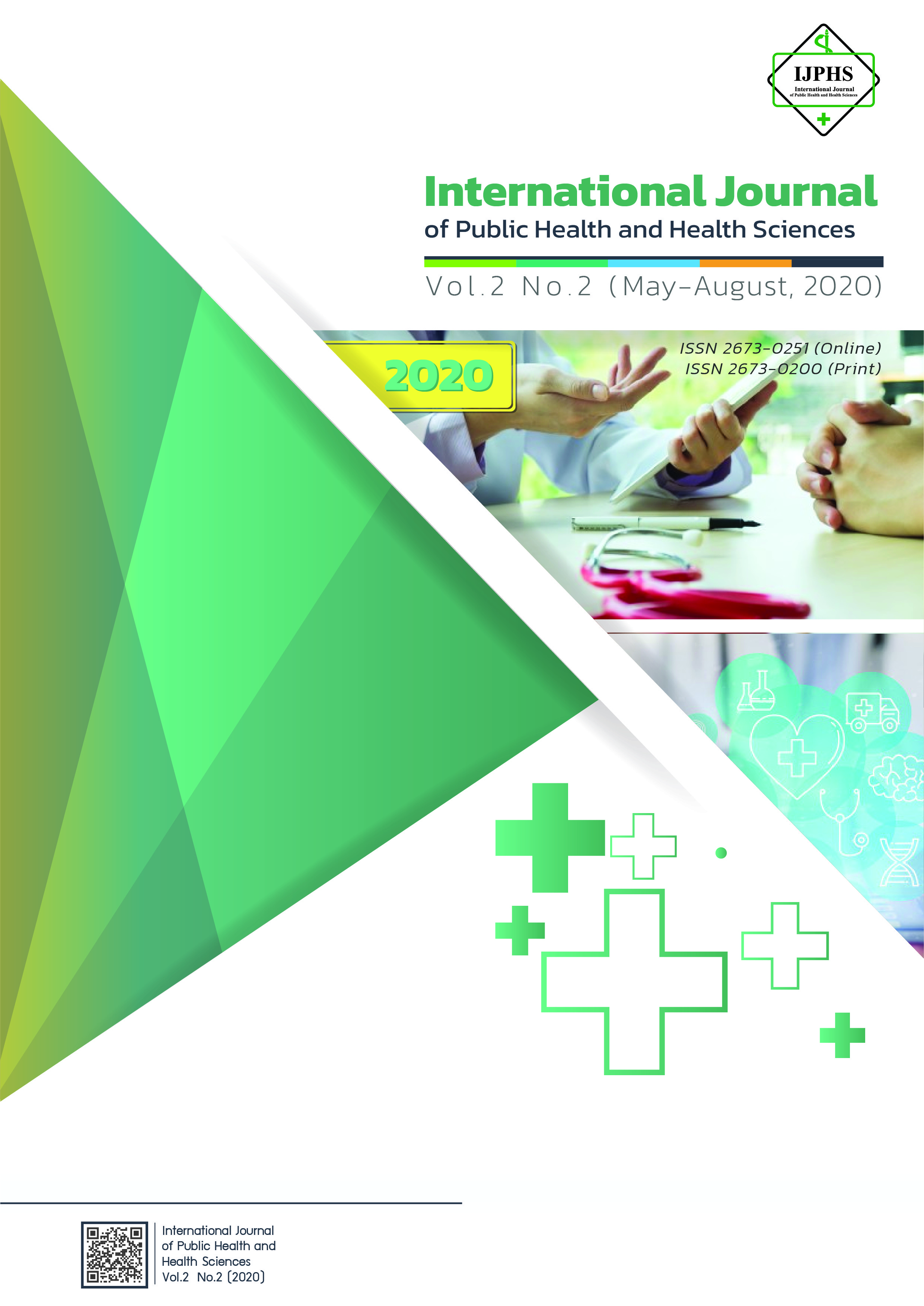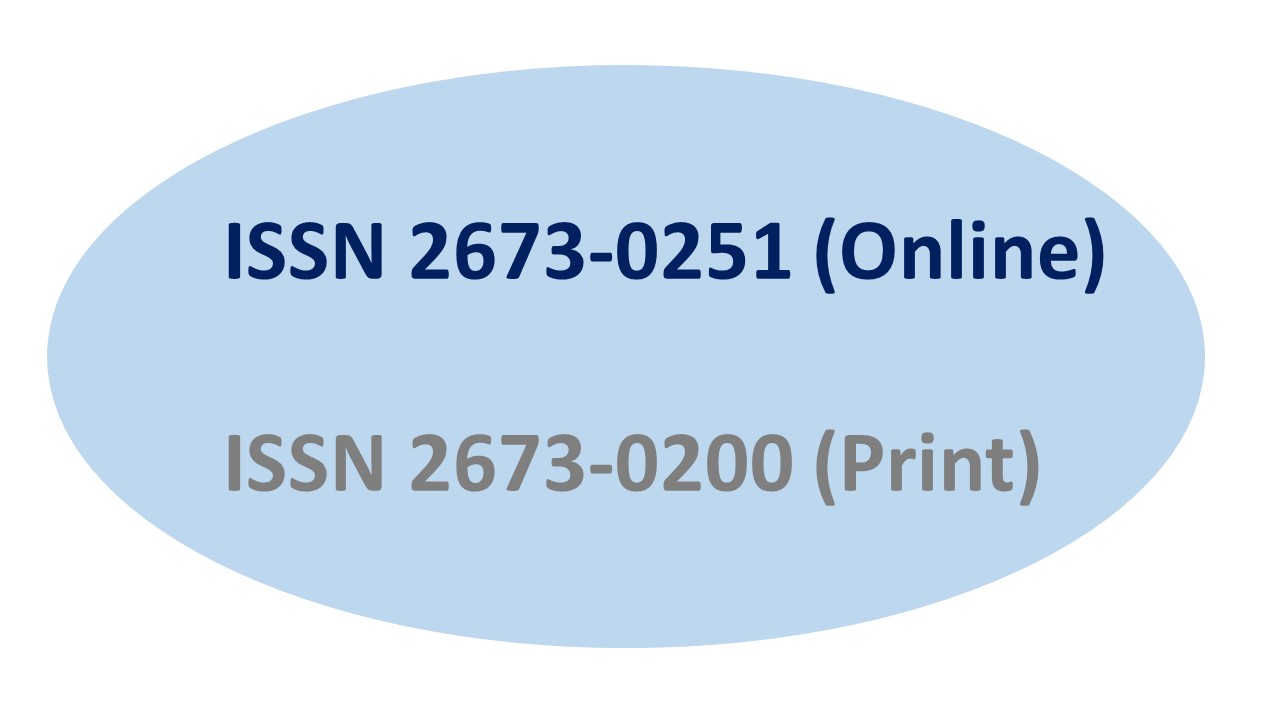Evaluation of the Management Practices in the Healthcare Delivery System of Ghana: A Case Study of KNUST Hospital, Kumasi
Management Practices in the Healthcare Delivery System of Ghana
Keywords:
Healthcare, Hospital Management, Managers, KNUST Hospital, GhanaAbstract
Healthcare delivery issues are managerial though they are sometimes tied to national policies. There is therefore the call for effective management practices in healthcare facilities. However, there is no specific management training system for doctors and other staff who become chief executive officers of these facilities. This paper evaluates the management practices of healthcare delivery of the KNUST Hospital and the implication of these practices on quality healthcare delivery. Using a population of 265 health staff and 125 patients who have spent a minimum of 24 hrs in the hospital, the authors used a purposive and simple random sampling to ascertain the significant relationship between healthcare management practices and healthcare delivery systems. The outcome of the study was determined by evaluating responses from our structured questionnaire on the management practices of healthcare delivery in KNUST Hospital. There was a strong association between maternity and child health, and drugs and vaccines. Similarly, we found the association between environmental health and counselling services to be strong. Healthcare management practices and healthcare delivery were positively and significantly related. Shortage of health care professionals, service quality and length of time before seeing the doctor were challenges to efficient management practices. The study recommends that there should be proper training schemes for management. In addition, management of the hospital should undertake outreach programmes in the communities to sensitize the people on the negative effects of self-medication and superstition in the management of health care delivery in the hospital.
References
Adu-Gyamfi, Samuel and Richard Adjei. (2017). Traditional Medicine: Narratives from an
Indigenous Population. Lap Lambert Academic Publishing.
Afulani, Patience, et al. (2018). “Companionship during facility-based childbirth: results from a
mixed-methods study with recently delivered women and providers in Kenya” BMC Pregnancy and Childbirth volume 18, Article number: 150
Aguinis, H., and Solarino, A. M. (2019). Transparency and replicability in qualitative research: The
case of interviews with elite informants. Strategic Management Journal, (February), 1–25. https://doi.org/10.1002/smj.3015.
Alldred, P., Cullen, F., Edwards, K., and Fusco, D. (2018). The SAGE Handbook of Youth Work
Practice. The SAGE Handbook of Youth Work Practice, (July 2018), 0–1. https://doi.org/10.4135/9781526416438.
Bansah, Israel Boafo. “KNUST Hospital” July 11, 2017 2:58 pm. Available at
https://www.legonconnect.com/knust-hospital/.
Blum, Pamela K., and Vanessa Q. Tremarco. "High potential PR professionals thrive on challenge:
A study of employee turnover and retention in the public relations industry." Institute for Public Relations (2008).
Brenya, E., and Warden, E. (2014). Bridging the Great Divide: A Case Study of Ghana Community
Policing as a State-Society Synergetic Developmental Approach. Vol. 5(2), 242–247.
Carayon, Pascale and Wood, Kenneth E. (2010). “Patient Safety: The Role of Human Factors and
Systems Engineering.” Stud Health Technol Inform, 153: 23–46.
Chan, B. T. B., Veillard, J. H. M., Cowling, K., Klazinga, N. S., Brown, A. D., and Leatherman, S.
(2019). Stewardship of quality of care in health systems: Core functions, common pitfalls, and potential solutions. Public Administration and Development, 39(1), 34–46. https://doi.org/10.1002/pad.1835.
Cronin Cory E.et al. (2018). “Hospital Administration as a Profession.” Professions and
Professionalism Volume 8, No 2. e2112.
Deane, J. Waldman. (2006). “Healthcare CEOs and Physicians: Reaching Common
Ground/Practitioner Application.” Journal of Healthcare Management, 51 (3).
Donkor, E.S.et al. (2012). “Self-Medication Practices with Antibiotics among Tertiary Level Students
in Accra, Ghana: A Cross-Sectional Study.” Int. J. Environ. Res. Public Health, 9: 3519-3529.
Doyle, Leslie. “Healthcare Administrators: Roles, Responsibilities, and Career Outlook” 2019. North
Eastern University Program Guide.
Elekwachi, P. N. (2019). Perceptions of Financial Bribery and Kickbacks on Nigerian Healthcare
Public Policy. Walden Dissertations and Doctoral Studies Walden.
Fenton, J. J., Magnan, E. M., Jerant, A., Kravitz, R. L., and Franks, P. (2019). Patient characteristics
associated with making requests during primary care visits. Journal of the American Board of Family Medicine, 32(2), 201–208. https://doi.org/10.3122/jabfm.2019.02.180218.
Fishburn, Peter C. (1968). “Utility Theory.” Management Sciences, Vol. 14 (5).
Frimpong, Enoch Darfah. (2007). “Clinic for KNUST Students” WEDNESDAY, APRIL 04, 2007. Available at http://enochdarfahfrimpong.blogspot.com/2007/04/clinic-4-knust students.html.
Gostin, L. O., Hodge, J. G., and Gulinson, C. L. (2019). Supervised Injection Facilities: Legal and
Policy Reforms. JAMA - Journal of the American Medical Association, 321(8), 812. https://doi.org/10.1001/jama.2019.0095.
Guo, R., Berkshire, S. D., Fulton, L. V., and Hermanson, P. M. (2017). Use of evidence-based
management in healthcare administration decision-making. Leadership in Health Services, 30(3), 330–342. https://doi.org/10.1108/LHS-07-2016-0033.
Haproff, P. J., Zuza, A. V., and Yin, A. (2018). West-directed thrusting south of the eastern Himalayan
syntaxis indicates clockwise crustal flow at the indenter corner during the India-Asia collision. Tectonophysics, 722(November 2017), 277–285. https://doi.org/10.1016/j.tecto.2017.11.001.
Heider, F. (1958).The psychology of interpersonal relations. New York: Wiley.
Holtrop, J. S., Potworowski, G., Green, L. A., and Fetters, M. (2019). Analysis of Novel Care Management Programs in Primary Care: An Example of Mixed Methods in Health Services Research. Journal of Mixed Methods Research, 13(1), 85–112. https://doi.org/10.1177/1558689816668689.
Hughes, O. E. (2017). Public Management and Administration. In Public Management and
Administration. https://doi.org/10.1057/978-1-137-56010-0.
Itkin, P., Spreen, G., Hvidegaard, S. M., Skourup, H., Wilkinson, J., Gerland, S., and Granskog, M.
A. (2018). Contribution of Deformation to Sea Ice Mass Balance: A Case Study from an N-ICE2015 Storm. Geophysical Research Letters, 45(2), 789–796. https://doi.org/10.1002/2017GL076056.
Janati, A., et al. (2018). “An Evidence-Based Framework for Evidence-Based Management in
Healthcare Organizations: A Delphi Study.” Ethiopian journal of health sciences, 28(3): 305–314. https://doi.org/10.4314/ejhs.v28i3.8.
Kazdin, A. E. (2019). Annual Research Review: Expanding mental health services through novel
models of intervention delivery. Journal of Child Psychology and Psychiatry and Allied Disciplines, 60(4), 455–472. https://doi.org/10.1111/jcpp.12937.
Loh, Erwin. (2012). “How and Why Doctors Transition from Clinical Practice to Senior Hospital
Management: A Case Research Study from Victoria, Australia.” International Journal of Clinical Leadership, 17 (4).
Manthorpe, J., Samsi, K., Joly, L., Crane, M., Gage, H., Bowling, A., and Nilforooshan, R. (2019).
Service provision for older homeless people with memory problems: a mixed-methods study. Health Services and Delivery Research, 7(9), 1–184. https://doi.org/10.3310/hsdr07090.
Martinko, Mark J.et al. (2012). “The Relationships Between Attribution Styles, LMX, and
Perceptions of Abusive Supervision” Journal of Leadership and Organizational Studies 19(4): 397–406.
Mathole, T., Lembani, M., Jackson, D., Zarowsky, C., Bijlmakers, L., and Sanders, D. (2018).
“Leadership and the functioning of maternal health services in two rural district hospitals in South Africa.” Health policy and planning, 33(2). https://doi.org/10.1093/heapol/czx174.
Mbindyo, P., Gilson, L., Blaauw, D. et al. (2009). “Contextual influences on health worker motivation
in district hospitals in Kenya.” Implementation Science, Volume 4, (43). https://doi.org/10.1186/1748-5908-4-43
Munoz F. M. (2018). “Current Challenges and Achievements in Maternal Immunization Research.”
Frontiers in immunology, 9: 436. https://doi.org/10.3389/fimmu.2018.00436
Muth, C., Blom, J. W., Smith, S. M., Johnell, K., Gonzalez-Gonzalez, A. I., Nguyen, T. S., Valderas,
J. M. (2019). Evidence supporting the best clinical management of patients with multimorbidity and polypharmacy: a systematic guideline review and expert consensus. Journal of Internal Medicine, 285(3), 272–288. https://doi.org/10.1111/joim.12842.
Oleribe, O.O. et al. (2019). “Identifying Key Challenges Facing Healthcare Systems In Africa And
Potential Solutions” International Journal of General Medicine, Volume 12.
Palmieri, P. A., and Peterson, L. T. (2009). Attribution theory and healthcare culture: Translational
management science contributes a framework to identify the etiology of punitive clinical environments. In Advances in Health Care Management (Vol. 8). https://doi.org/10.1108/S1474-8231 (2009).
Reason, J. T. (2000). “Human error: Models and management.” British Medical Journal, 320 (7237):
–770.
Rotar, A.M. (2016). “The involvement of Medical Doctors in Hospital Governance and Implication
for Quality Management: A Quick Scan in 19 and an in-depth Study in 7 OECD Countries.” BMC Health Services Research, 16 (2).
Seth, A., John Coffie, A., Richard, A., and Adu-Yeboah Stephen, S. (2019). Hospital Administration
Management Technology Adoption; A Theoretical Test of Technology Acceptance Model and Theory of Planned Behavior on HAMT Adoption. American Journal of Public Health Research, 7(1), 21–26. https://doi.org/10.12691/ajphr-7-1-4.
Smith, A. M. (2019). Management Strategies to Address the Substance- Impaired Healthcare
Professional in the Workplace.
Sperber, J. (2016). Patient Driven, Patient Centered Care: Examining Engagement within a Health
Community Based on Twitter. ProQuest Dissertations and Theses, 219. Retrieved from http://sfx.scholarsportal.info/guelph/docview/1766154516?accountid=11233%250Ahttp://sfx.scholarsportal.info/guelph?url_ver=Z39.882004andrft_val_fmt=info:ofi/fmt:kev:mtx:dissertationandgenre=dissertations+%2526+thesesandsid=ProQ:ProQuest+Dissertations+%2526+Theses+A%25
Sullivan, B., and Chabot, C. K. (2018). The Science of Administrative Change By spurring
administrative agencies to roll back a spate of important Regulations. 2381(2001), 1–63.
Sweis, R., Ismaeil, A., Obeidat, B., and Kanaan, R. K. (2019). Reviewing the Literature on Total
Quality Management and Organizational Performance. 7(3), 192–215.
Wallenius, Jyrki. et al. (2008). “Multiple Criteria Decision Making, Multiattribute Utility Theory:
Recent Accomplishments and What Lies Ahead” Management Science, Vol. 54, No. 7.
Wallick, William G; Stager, Kimberly J. (Nov/Dec 2002). “Healthcare managers' roles, competencies,
and outputs in organizational performance improvement / Practitioner response” Journal of Healthcare Management; Chicago Vol. 47, 6: 390-401
WHO. Health is a fundamental human right. Human Rights Day 2017
WHR. (2006). Working together for health The World Health Report 2006. World Health, 19(3), 237. https://doi.org/10.1186/1471-2458-5-67.
Wilkie V. (2012). “Leadership and management for all doctors.” The British journal of general
practice: the journal of the Royal College of General Practitioners, 62(598): 230–231. https://doi.org/10.3399/bjgp12X636290
Willis-Shattuck, Mischa et al. (2008). “Motivation and Retention of Health Workers in Developing
Countries: A Systematic Review.” BMC Health Services Research, 8 (1).
World Health Organization (WHO). (2015). Visceral leishmaniasis: control strategies and
epidemiological situation update in East Africa. Report of a WHO Bi-Regional Consultation Addis Ababa, (March), 9–11. Retrieved from http://www.who.int/iris/handle/10665/190168.
World Health Organization. (2015). Engaging patients, carers and communities for the provision of
coordinated/integrated health services: strategies and tools. 1–10.
Downloads
Published
Issue
Section
License
If the manuscript is accepted for publication, copyright of the article shall be assigned to the IJPHS. After acceptance of a manuscript, the authors will be requested to complete a copyright transfer agreement form







